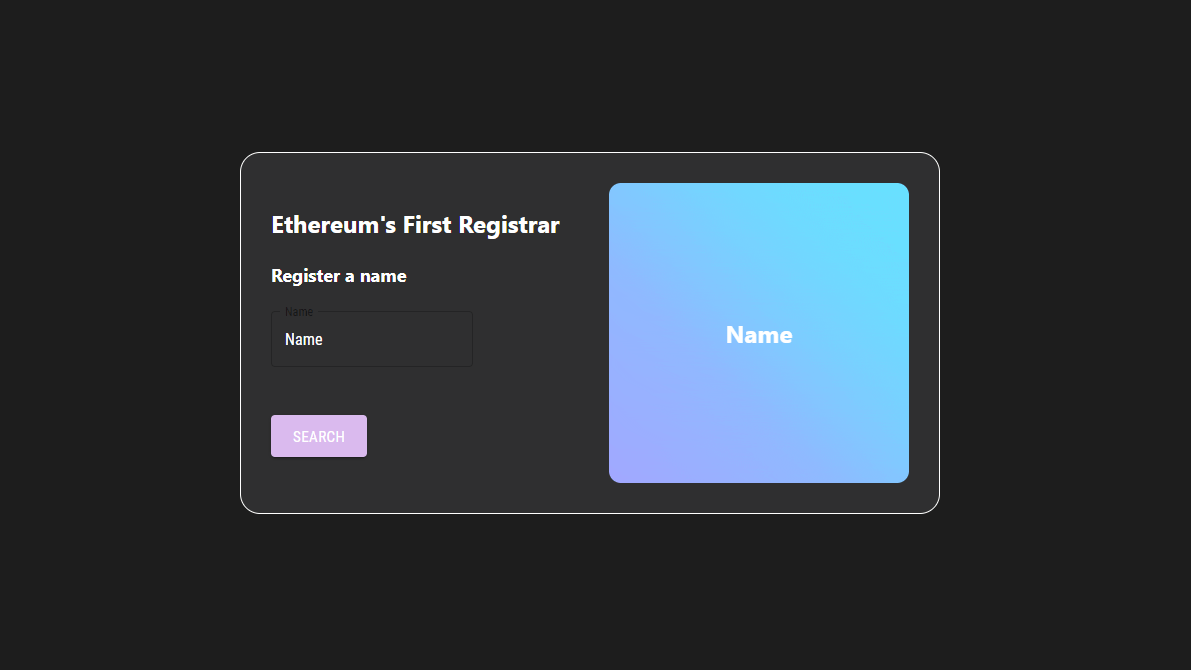Every week we simplify the market into key points so you can stay up to date on market trends, upcoming drops, top project guides and much more!
BY Langston Thomas
October 04, 2022
When it comes to historic NFT projects, the general rule is: older means better. Although legacy collections like CryptoPunks, CryptoKitties, and Curio Cards have gained newfound popularity in the last few years, the fact that we can trace their provenance back through the annals of the blockchain contributes a wealth of historical and cultural value to these projects.
Yet, while many collectors pride themselves on obtaining relic tokens of old, it seems a single, classic NFT collection has eluded even those who purport to be NFT historians. With the resurgence of Linagee Name Registrar, the collective NFT community has found itself in awe of the utility-based project, which is almost as old as the Ethereum blockchain itself.
Linagee Name Registrar is a simple domain name registrar created for the Ethereum blockchain. Those who have familiarized themselves with Ethereum Name Service (ENS) are sure to understand the power and significance of creating and owning a shorthand name linking directly to their Ethereum wallet.
The name registry service was, as the name suggests, created by an anonymous Ethereum developer named Linagee — who also holds the accolade of deploying the very first ever smart contract on Ethereum. Shortly after deploying the Name Registrar, Linagee took to Reddit to announce the project.
Deployed on August 8, 2015, Linagee Name Registrar is only a single week older than the Ethereum blockchain, which was launched on July 30, 2015. NFT archeologist Mason Keresty rediscovered the project while he was decompiling every contract within the first 300,000 blocks of the Ethereum blockchain. It seems the project had mostly been forgotten and was essentially inaccessible to general NFT enthusiasts.
1/ It appears that potentially the oldest and now first NFT on Ethereum was just rediscovered.
The contract is a domain name registrar (similar to ENS) that was deployed on August 8th, 2015.
If you are going to interact, use a burner!
Minting app: https://t.co/u7rGNDzmyM pic.twitter.com/8nnb52Ns6a
Since only 60 domain names were initially minted on the contract back in 2015, in an effort to integrate the project back into the NFT ecosystem, Keresty created a new minting app linking to the original smart contract. Shortly after, the new app was shared throughout the NFT community, resulting in the newly founded Linagee OpenSea collection that grew exponentially as enthusiasts raced to register their names.
The Linagee Name Registrar works very similarly to ENS in the way that users can purchase and manage domain names for their wallets. There are a few differences, though, with two of the most prominent being that a) Linagee currently only seems to function as a domain for Ethereum wallets (as opposed to ENS being usable for naming websites, wallets, NFTs, and other digital assets, and b) with Linagee, users can reserve their names indefinitely, while ENS makes users select and pay for a specific period.
Linagee registrar allows users to claim names by using the “reserve” function. Through reserving users can set a domain name for their wallet using the “setAddress” function. Keep in mind that a name can only be reserved once. If someone already purchased your specific name, it will show up as unavailable, and will probably only be obtainable via OpenSea.
The new Linagee site also allows for the wrapping and transferring of domain names, further expanding the operability of the Registrar system. You can learn more about this and its other functionalities here.
4/ The contract was found by @m_keresty who is also the one who created the minting app. Here is a quick rundown that he gave of the functions on the contract: pic.twitter.com/bnAUzAioeo
Considering the Linagee Registrar dates back to before the majority of NFT collectors had even been exposed to the weird wide world of crypto, the significance of the project cannot be overstated. Yet, significance aside, time will tell if the project can maintain its usability and desirability as a part of today’s more mature NFT market.

